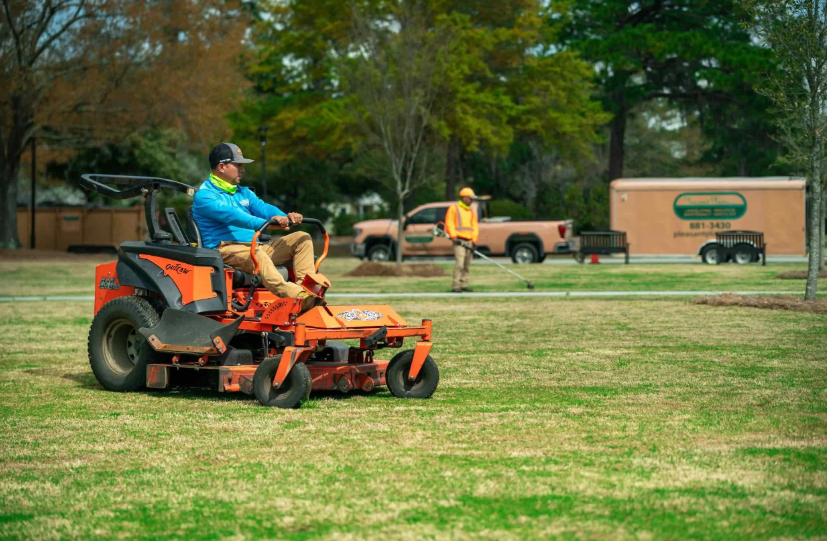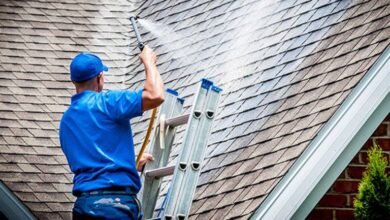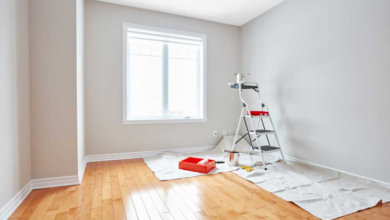How to Maintain a Beautiful Lawn Year-Round in Charleston

Keeping a lush, green lawn in Charleston’s warm coastal climate is both an art and a science. The combination of humid summers, mild winters, and salty breezes creates unique challenges for homeowners and businesses looking to maintain healthy turf and vibrant landscaping. Whether you’re managing a small residential yard or a large commercial property, understanding how to care for your lawn throughout the year makes all the difference.
In this guide, we’ll explore proven strategies, expert lawn care tips, and seasonal maintenance techniques that help Charleston property owners achieve a thriving landscape — with the help of professional lawn care experts like Yard Art Landscaping.
1. Understand Charleston’s Lawn Care Climate
Charleston’s climate falls within the USDA Hardiness Zone 8b, meaning temperatures rarely drop below 15°F, and the growing season is long. However, high humidity and frequent rain can make it easy for lawns to develop fungal problems or pest infestations.
The key to year-round success lies in adapting your lawn care approach to local weather patterns. In Charleston:
Summers are hot and humid — requiring consistent watering and mowing.
Winters are mild — allowing warm-season grasses to rest but not die off completely.
Spring and fall are prime times for seeding, aerating, and fertilizing.
2. Choose the Right Grass Type for Charleston Yards
The foundation of any beautiful lawn begins with selecting the right grass species. Because of Charleston’s coastal environment, warm-season grasses perform best. Here are the top choices for local properties:
Bermuda Grass: Great for full-sun areas; grows quickly and recovers fast from damage.
Zoysia Grass: Known for its lush density and ability to tolerate moderate shade.
Centipede Grass: A low-maintenance option that thrives in sandy, acidic soil.
St. Augustine Grass: Ideal for shaded lawns; resistant to salt and heat.
Professional landscapers like lawncareservicecharleston.com often recommend blending varieties for optimal coverage and durability.
3. Establish a Consistent Mowing Schedule
Regular mowing isn’t just about aesthetics — it promotes healthy growth and prevents weeds from taking over. Each grass type has an ideal mowing height:
Bermuda: 1–1.5 inches
Zoysia: 1–2 inches
Centipede: 1.5–2 inches
St. Augustine: 2.5–4 inches
Always mow when the grass is dry and avoid cutting more than one-third of the blade at a time. During Charleston’s growing season (April–October), you may need to mow weekly, while in cooler months, biweekly or monthly mowing often suffices.
Hiring professionals from Yard Art Landscaping ensures your lawn is mowed with precision and on schedule, no matter the season.
4. Master the Art of Watering Wisely
Charleston lawns need about one inch of water per week, either from rainfall or irrigation. Because the region experiences both heavy downpours and dry spells, it’s essential to adjust your watering routine accordingly.
Watering Tips:
Water early in the morning to minimize evaporation.
Avoid watering in the evening to reduce the risk of fungal disease.
Use a smart irrigation system that adjusts based on weather conditions.
Deep watering once or twice a week is better than frequent, shallow watering.
If you’re unsure about irrigation schedules or sprinkler efficiency, professional lawn maintenance teams like those at Yard Art Landscaping can design and install a custom watering plan suited to your yard’s needs.
5. Seasonal Fertilization for Optimal Growth
A good fertilization schedule ensures your lawn gets the nutrients it needs year-round.
Charleston’s lawns benefit from the following routine:
Spring: Apply a balanced fertilizer to kickstart growth after winter dormancy.
Summer: Use a slow-release nitrogen formula to maintain vibrant green color.
Fall: Add potassium and phosphorus to strengthen roots before cooler months.
Winter: Avoid heavy feeding; instead, focus on soil health and aeration.
Using high-quality, locally suited fertilizers — along with professional advice from lawncareservicecharleston.com — helps maintain steady, sustainable growth.
See also: The Homeowner’s Guide to Exterior Cleaning and Property Maintenance in Caboolture
6. Control Weeds, Pests, and Lawn Diseases
Charleston’s humid weather creates a breeding ground for weeds, insects, and fungal problems. A proactive prevention plan keeps your lawn lush and healthy.
Common Lawn Issues in Charleston:
Weeds: Crabgrass, clover, and dandelions often appear in early spring.
Pests: Chinch bugs, grubs, and armyworms can damage roots and blades.
Diseases: Brown patch, dollar spot, and rust are common fungal infections.
Solutions:
Apply pre-emergent herbicides in early spring and fall.
Use organic pest control treatments when possible.
Aerate and dethatch your lawn regularly to improve air circulation.
Schedule a professional inspection every few months to detect problems early.
Professionals at Yard Art Landscaping use eco-friendly methods to handle weeds and pests without harming your soil or nearby plants.
7. Lawn Aeration and Overseeding for Strong Roots
Over time, soil compaction can suffocate roots, preventing water and nutrients from penetrating deep into the ground. Aeration helps relieve this pressure and rejuvenates the lawn.
Best time for aeration:
Late spring to early summer, when grass is actively growing.
After aerating, overseeding helps fill thin or bare patches with fresh growth, improving the lawn’s density and resilience. Experts at lawncareservicecharleston.com recommend pairing these services annually for long-term lawn health.
8. Seasonal Maintenance Tips for Charleston Lawns
Each season requires specific lawn care techniques:
Spring:
Rake debris and remove thatch buildup.
Fertilize and treat for weeds.
Begin consistent mowing.
Summer:
Maintain proper watering schedules.
Monitor for pests and heat stress.
Mow frequently, keeping blades sharp.
Fall:
Aerate and overseed to thicken the turf.
Apply fall fertilizer rich in potassium.
Clear fallen leaves regularly.
Winter:
Reduce mowing frequency.
Avoid heavy foot traffic on dormant grass.
Plan landscaping upgrades for spring.
Following these steps keeps your lawn green, balanced, and thriving throughout Charleston’s changing seasons.
9. Add Landscaping Features to Boost Curb Appeal
Beyond basic lawn care, landscaping elements can dramatically improve your home’s curb appeal and outdoor enjoyment. Consider:
Installing flower beds with native plants like azaleas and camellias.
Adding stone pathways, mulch beds, or decorative edging.
Planting shade trees to cool your yard naturally.
Designing a custom irrigation system for efficient watering.
Professional landscape designers from Yard Art Landscaping specialize in creating outdoor spaces that blend beauty, function, and sustainability for Charleston homes.
10. Why Professional Lawn Care Services Make a Difference
While DIY lawn care can be rewarding, hiring a professional service often saves time, money, and frustration in the long run.
Benefits include:
Expert analysis of soil and turf conditions.
Access to commercial-grade equipment and eco-safe treatments.
Customized seasonal plans for Charleston’s local climate.
Consistent upkeep for lasting results.
Whether you need full-service lawn maintenance or a one-time landscape makeover, trusted professionals like Yard Art Landscaping provide the experience and dedication needed to keep your property looking its best year-round.
Final Thoughts
Maintaining a beautiful lawn year-round in Charleston requires planning, patience, and the right techniques for the local environment. From smart watering and fertilization to seasonal care and professional support, every step contributes to a lush, green outdoor space that enhances your property’s value and appeal.
For expert lawn care, landscape design, and maintenance in Charleston and surrounding areas, visit lawncareservicecharleston.com and discover how Yard Art Landscaping can transform your yard into a thriving, picture-perfect landscape.




